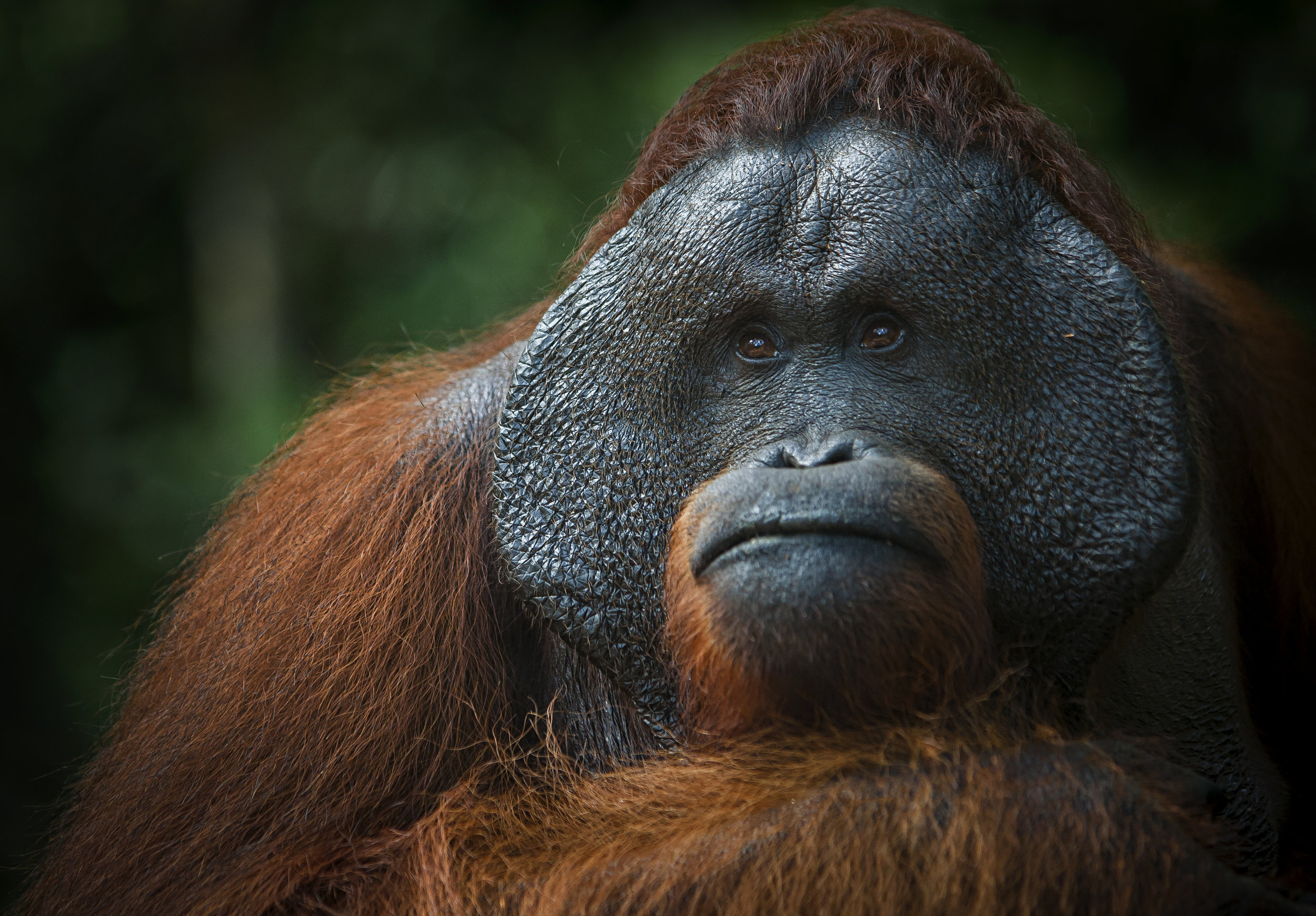Bornean Orangutan
"TOWAN" by Iain McCaig (Watercolor)
“This is a posthumous portrait of TOWAN, a beloved male orangutan from Seattle’s Woodland Park Zoo who passed away at the venerable age of 48 (Zoo photographer Dennis Dow kindly allowed me to use his photos as reference). Towan and his twin sister Chinta were born and raised in captivity—Borneo/Sumatra hybrids, which currently means they would never be released into the wild. As one of Towan’s favorite activities was to paint (he was considered ‘primate artist in residence’ at the zoo), it seemed fitting to set him free inside a painting, to watch over the threatened tropical forests that his wild family depends on for their survival. ”
Your purchase is helping Expedition Art and Saving Species purchase land in Sumatra! Learn more about the project.
Habitat
No other ape, besides the Bornean orangutan, is found in Asia. It prefers living in the lowland forests of Malaysia and Indonesia on the island of Borneo. They are the largest of all arboreal, or tree-living, mammals. They live in rainforests, as well as tropical, swamp and mountain forests but prefer elevations less than 500 meters.
Family Life
Bornean orangutans are primarily solitary, but do form loose associations with their communities that are robust and dynamic. Females do not frequently give birth; in fact, an offspring is born once every six to eight years after a nine month gestation period. There are two distinct types of mature male orangutans: flanged and unflanged, with flanged males possessing the ability to make the characteristic “long call”. Baby orangutans remain with their mothers until the next offspring is born.
Lifespan
The lifespan of the Bornean orangutan is more than 50 years in the wild. They have been documented to live up to 59 years in captivity.
Hunting Habits/Diet
More than half of the diet of the Bornean orangutan is comprised of fruits. They also eat bark, leaves, flowers and a variety of insects, and over 300 kinds of fruit. Termites and ants are an occasional source of protein, and soil an occasional source of minerals. Mothers are instrumental in the education of their offspring in relation to food sources and eating techniques. Bornean orangutans are highly motivated by their preferred fruits and will migrate accordingly. They are the gardeners of Borneo, playing a huge role in seed dispersal.
Population
About 50-60,000 orangutans are around today, according to the most recent estimates. These orangutan populations have been in sharp decline over the past 60 years, as has the species’ habitat.
Fun Fact
97% of their DNA is similar to that of humans, making them one of our closest genetic ancestors. The translation of their name in Malay is “people of the forest.” There are currently three recognized subspecies of the Bornean orangutan, classified by region.
Why are they Endangered?
The most significant threat to the survival of the Bornean orangutan is habitat destruction. Young orangutans are also in high-demand for a flourishing pet trade, with several hundred dollars net per individual. Studies have indicated that 200-500 orangutans from Indonesian Borneo alone enter the pet trade each year, which is particularly problematic considering their low reproductive rate. Hunting poses an additional, and highly significant, threat.
Status
Critically Endangered


